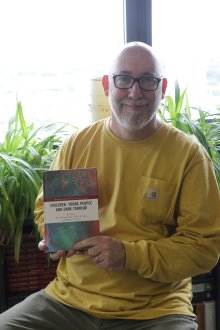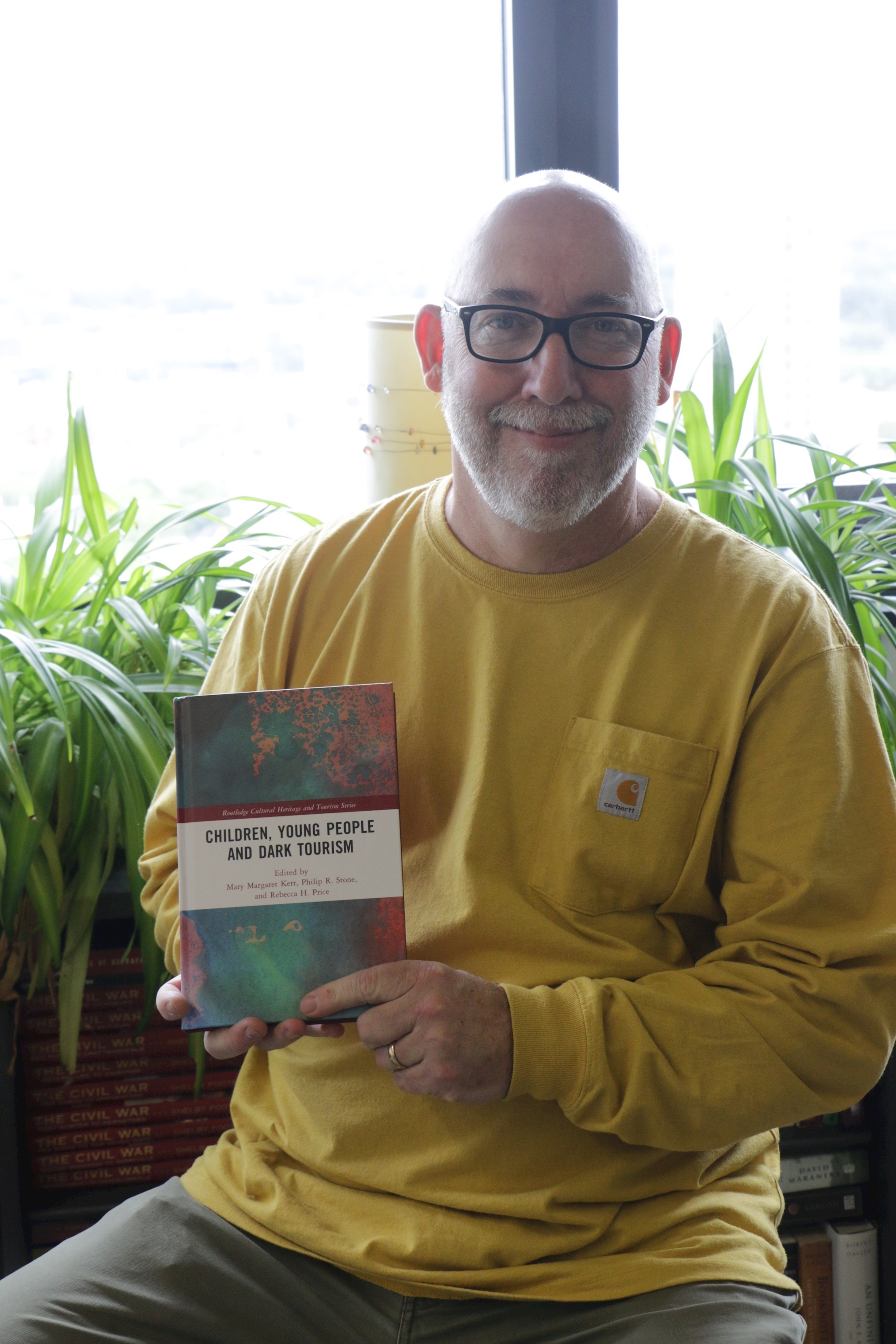Discover our
Home for Learning
- Contact
- 412-624-8020
- [email protected]

Falk Middle School U.S. History teacher Greg Wittig has published a chapter in a new book titled Children, Young People and Dark Tourism (Routledge Press). Wittig, a veteran Falk Lab School teacher, wrote a chapter titled “Difficult Heritage and the Digital Child: Challenges and Opportunities.” The book was co-edited by Pitt School of Education professor Mary Margaret Kerr.
Dark tourism is an emerging area of study focused on tourism directed to places that are identified with death and suffering. This can include battlefields, certain museums like the Johnstown Flood Museum, or the actual sites of death and suffering, such as the Flight 93 Memorial in Shanksville, Pa.
“The obvious examples are things like a Holocaust museum or a battlefield,” Wittig says.
Wittig has always been interested in the effects of space. He recounts talking with students about trips to places like the Grand Canyon and their descriptions of feeling awed, or very small.
The book chapter emerged from his observation that often these sites are created and curated without children in mind. Is it a problem, he wondered, for parents to bring three- or four-year-old children through a Holocaust Museum?
“Is it harming people?” he wondered. “What can we do to make this healthier for families and children?”
In the chapter, Wittig focuses on the example of the Johnstown Flood Museum. In fact it was a Falk Lab School field trip to various sites connected to the 1889 flood, co-chaperoned by Kerr, that provided the spark for Wittig’s contribution to the book.
“It was a field trip that didn’t go smoothly," Wittig says. He and Kerr took their group of students to eat lunch beside the Little Conemaugh River.
When the group boarded the bus to travel down to Johnstown, the bus wouldn’t start. As the group waited for assistance, students asked if they could take off their shoes and socks and wade in the stream. Soon, students spontaneously began to build a dam.
“They were passing rocks and boulders,” Wittig says. “It was authentic play. It blew me and Mary Margaret away. We sat there taking in the symbolic significance of it.”
Wittig approaches the subject of dark tourism for children through the lens of the digital child or digital native: that is, someone who speaks “the digital language of computers, video games, and the internet,” as Wittig writes.
“When you’re coming into these curated places, there has to be intentionality because the digital child is coming in with a certain desensitization to spectacle,” he says. “Spectacle is a consumable product now. We buy spectacle. We scroll through it on TikTok. How does a child process the tragedy of a massive loss of life when every day they’re playing a computer game based on a massive loss of life?”
For parents and teachers, the question is how to wake children up into a vulnerable space, one that allows them to connect meaningfully to a subject like history. How can digital tools help with that process?
“Where does the shock come from that allows consciousness to arise, when the tools you’re using to wake them up are the same enervating tools that they’re already using?” Wittig asks.
While there’s no simple answer to those questions, Wittig has explored approaches in his teaching that mix reality and digital platforms to prepare students for these spaces.
At the Johnstown Flood Museum itself, Wittig’s students connected to the material through the account of a boy who survived a massive tree crashing through his house and sweeping it away in the flood. Before the trip, Wittig had students read the account, and at the museum they listened to a recording of the boy recounting his ordeal.
“We did a lot of work talking about that kid’s perspective,” he says. “Students were placed into conditions where they could have a visceral connection with that boy. I said, ‘Can you imagine floating away like that, trying to survive, and your family’s already gone?’”
Students connected with the tragedy of the flood through the boy’s account and his voice.
“That was a little window to penetrate into authenticity,” Wittig says. “We’re not getting rid of these technologies. How do we make them work for us?”
